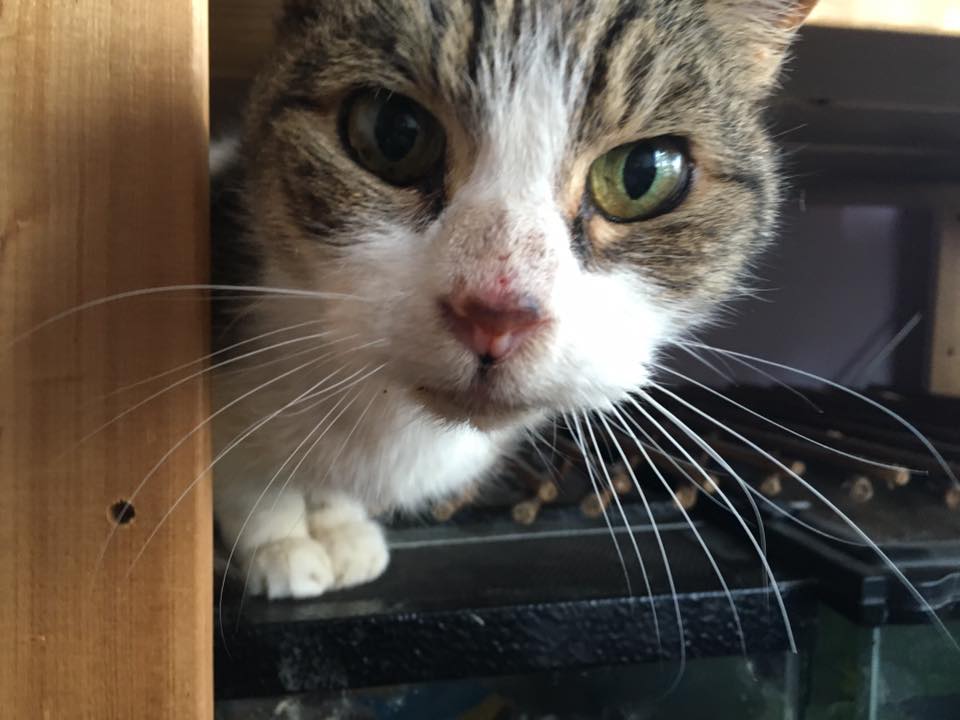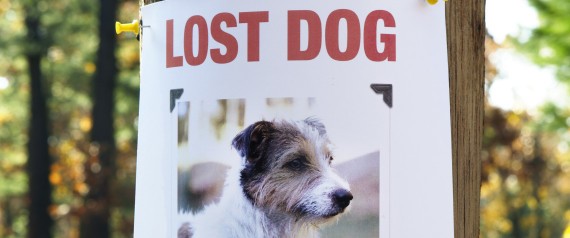Losing your pet can be a very worrying time. Although your natural instinct is to panic, try to keep calm and think logically as this will give you the best chance of getting your pet home. Here’s what to do if your pet goes missing.
Where did they go missing?
Did your dog run off on a walk or escape from the garden? Did your cat not come home at dinner time? It’s important to think about where your pet went missing so you can plan the best course of action. If your dog ran off on his walk, take the route you usually would as some dogs will use the familiar setting to get their bearings and some may go home on their own. Talk to people on your search and give them your number incase they spot your dog. The more people you talk to, the more eyes there are looking for your pet so make sure you tell everyone. If your dog escaped from the garden, it’s also a good idea to follow a route you would use when walking with him, however he may have gone a different way so if you can, get friends and family to help look in all directions.
It may sound silly, but check your house thoroughly first as cats do like to hide in places, such as behind the sofa and under the bed so cover these bases before you worry that they are lost. There is also the possibility that they have become stuck, so stay quiet and listen for any movement.If your cat hasn’t come home, call his or her name and shake their food box. It may be that she has found something to entertain her in a neighbouring garden and they don’t want to come home just yet. Try calling them at night when it’s quiet and listen for any meows as they may be trapped somewhere. You can also knock on neighbours doors to see if they have seen your cat.
If you have recently moved, it may be that your cat has tried to find it’s way back to your old house. Ask neighbours at your old address if they have seen anything as cats can travel a long way to return to home territories.

Put up posters and hand out flyers
As soon as you can, make up posters for your pet everywhere you can. Some shops will allow you to put one in their window, so it’s always worth asking. Include a recent photo, several contact numbers, the date and time they went missing and if you are offering a reward. Even the word ‘reward’ will encourage people to look, so it’s worth offering something, even if it’s a small amount. You don’t have to specify the amount on the poster. Make sure you put a clear description of their colour and coat length, as not everyone knows breeds, especially if they are an unusual breed or a crossbreed. Keep the text large and to the point so anyone can read it at a glance and laminate the posters so they aren’t destroyed by the elements.
Post flyers though doors with similar information, and in the case of cats, ask people to check sheds, garages and greenhouses as cats can get shut in accidentally. Put an advert in any newspapers you can to reach as many people as possible.
Make some phone calls
If your pet was picked up by a member of the public, it’s likely they handed him to someone else. Call any rescue centres in your area, as well as vets, pet shops and your dog warden. Even if they haven’t had any animals handed in, give them a full description of your pet, and a photo if possible incase they are found at a later date. If any animals have been picked up, visit the establishment yourself as my description of a brown crossbreed dog could be different to yours, even if its the same animal. Widen your search and call places out of your area too. Someone may have taken your pet to a vet clinic near to them and not to your local one.
You should also call the microchip company as they can put a mark on the chip so when he is found and scanned, it will show he is registered as lost. It will also stop someone else trying to change your pets microchip details. If you believe your pet may have been stolen, report this to the police as soon as possible. They may be aware of similar activities within your area and could offer help.
Get on the internet
There are a few websites dedicated to helping people find their missing pets. Perhaps the biggest and most well know is DogLost (who will list cats too). Doglost allows you to make a profile for your dog, print out posters and they will send alerts to volunteers in your area to help.
Another good idea is to make them a Facebook page and add as many photos as you can. Animals can look different in different lights and angles, especially crossbreeds! You can then share this page, invite your friends and make sure you update it regularly so it shows in people’s feeds. Do the same on twitter too, and encourage people to re-tweet.
Do not chase them
If you are out looking and see your pet, do not chase them! Many dogs will not recognise their owner when they have got lost, and will panic if chased. Make sure you tell others not to chase either and ask them to phone you, and get to the location as soon as possible. When you arrive, sit down calmly, speak their name and familiar phrases, don’t stare at them and wait for them to come to you. It can take a while, but persevere.

Don’t give up
Losing a pet is mentally and physically draining, but don’t give up. Check lost pet site daily, keep calling vet clinics and the dog warden as new staff members may not get messages during staff handovers. Keep your pet’s social media page alive by posting and keep asking people if they have seen your pet when you are out searching. Check your posters are still up and replace them when necessary.
How to prevent your pet from going missing
Check your fences daily if you have dogs, especially in bad weather. Heavy rain and strong winds can cause damage to fences, and they only need a small gap to get out. Foxes frequent many gardens, so make sure that no holes have been dug overnight. If you have recently moved, keep your cat indoors for a few weeks so they can get used to their new home, and keep dogs on lead on new walking routes. Make sure you have your pet’s microchip number written down, and that your vet has it recorded too. It is so important to ensure your details on the chip are up to date, otherwise your pet won’t get returned to you if they are found. Make sure your pet is wearing a good fitting collar, with a tag with your surname, address and contact numbers on. It’s always advisable to have recent photos of your pet just incase they do go missing.
If you have lost your pet, feel free to share them on my Facebook and Twitter page.

